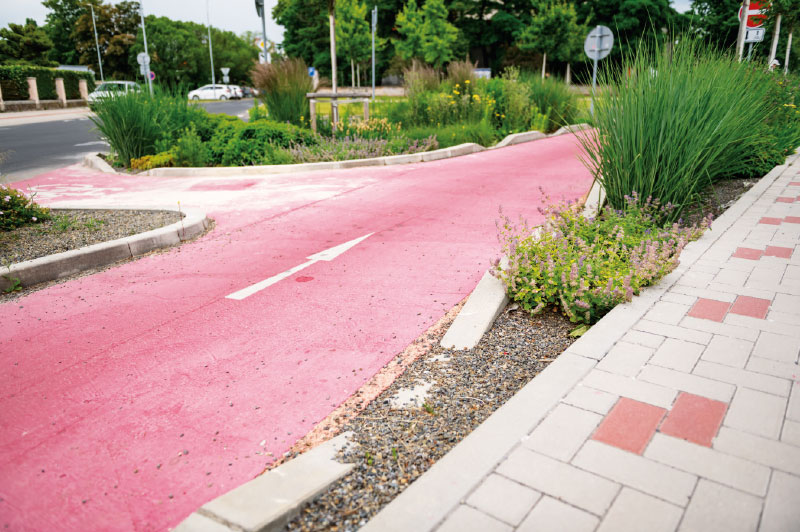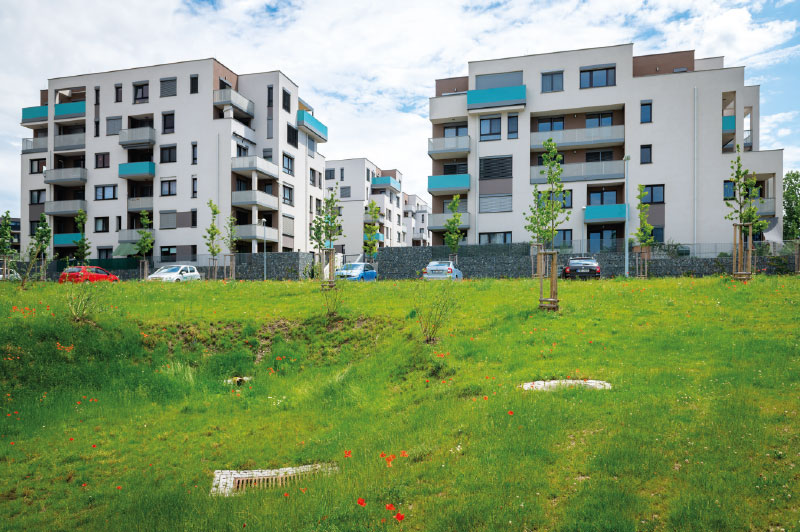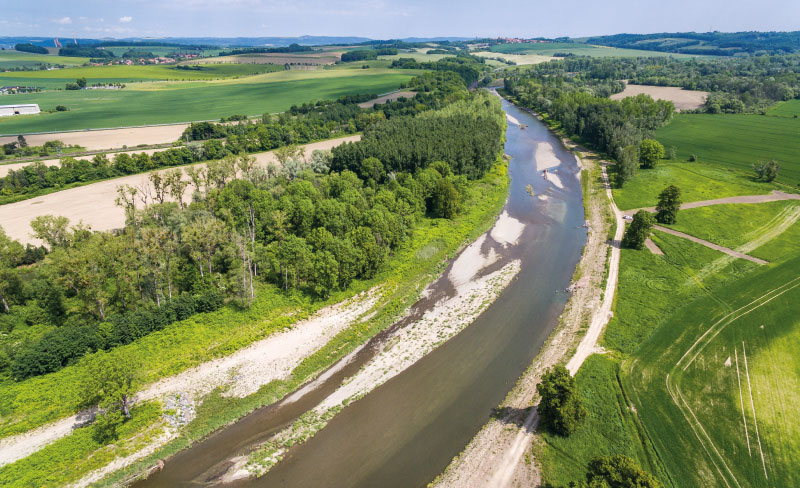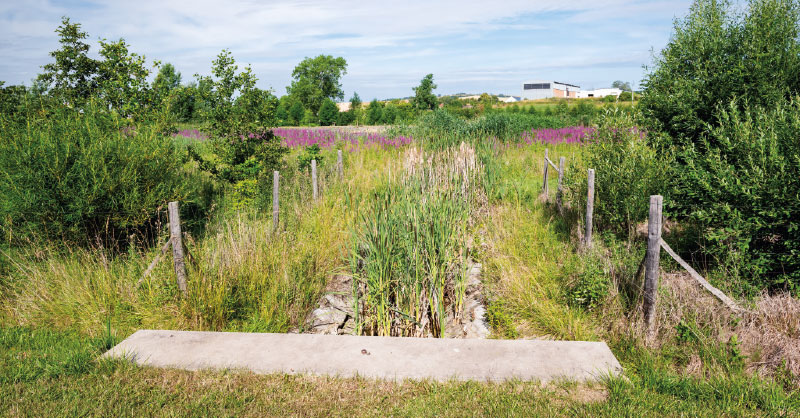New predictions of climate change impacts in the Czech Republic show that rainfall will increase slightly in the future. However, in combination with the expected increase in temperature, evaporation will be higher, which will lead to long-term water shortage. Forecasts also say that rainfall will be distributed differently during the year, which in practice means that long periods of drought will alternate with sudden torrential rainfall. But this is nothing new. In the Czech Republic today, there is already a lack of water; it lies on the main European watershed, and we are therefore highly dependent on rainwater. In the past, unfortunately, we have modified cities and the countryside in such a way that rainwater was quickly diverted away – by channelling watercourses, by farming methods, and by creating sewers. Adaptation measures to climate change in the field of water management can significantly increase the sustainability of water resources, reduce the risk of floods, and ensure water even in times of drought.
Water in the city will improve the microclimate
Urban dwellers are the most affected by weather extremes, such as heat waves or torrential rainfall causing local floods. The reason is the lack of greenery and water, the excess of paved surfaces, and the rapid runoff of water through the sewers, which during torrential rains causes overloading of wastewater treatment plants and, hence, water pollution. In order to limit these phenomena, it is crucial that the rainwater is retained at the point of impact. Infiltration and water retention measures can prevent sewers from overflowing during torrential rain in urban areas, ensure sufficient water for urban greenery, and improve the microclimate.
There are many ways to deal with water retention in the urban areas. In Roudnice nad Labem (Fig. 1), for example, they have invested in the reconstruction of streets and not only added more parking spaces, but, thanks to the design of the architectural studio, they also built a system of blue-green infrastructure. Local streets are lined with rain gardens. These capture surface water and allow it to gradually seep into the subsoil. In addition, they planted a number of trees, which allowed the water to soak in, and used permeable material on paved areas.

Fig. 1. Rain gardens line the pavements and roads in Roudnice nad Labem
(Source: Nadace Partnerství – Adapterra Awards, photo: V. Herout)
It is not always possible to hold all the water in the ground at once, so a combination with retention reservoirs is suitable. Thanks to them, the rainwater runoff will be slowed down, both into the sewage system, which will not get overloaded, and into the surrounding greenery. They have been put it into practice, for example, in the Suomi Hloubětín residential district in Prague (Fig. 2). Retention reservoirs are located under apartment buildings. Surplus water from these cisterns then flows through outdoor distribution systems into the infiltration areas, open shallow ditches with an infiltration function, and only then does the rest of the water travel to the central infiltration pond and from there through the overflow to the newly meandering Rokytka stream.

Fig. 2. Below Suomi Hloubětín, there are infiltration meadows where water from retention reservoirs flows to (Source: Nadace Partnerství – Adapterra Awards, photo: V. Herout)
Semi-natural restoration of watercourses and anti-flood measures
Slowing down water runoff is a task not only for the urban environment, but also for watercourses and agricultural landscapes. In the last century, the regulation of watercourses into narrow straight channels was popular, which means that even low intensity rainfall or snow melt can cause significant problems in the form of floods and inundations. Today, the trend is exactly the opposite – to restore watercourses in a semi-natural way. Natural and semi-natural watercourses slow down the flow of water, enabling regulated overflow, and thus reduce the risk of floods.
A number of successful watercourse restorations have been carried out by Morava River Basin Management; among them is the project to widen the bed of the gravelly Bečva river (Fig. 3). The main goal of modifying the watercourse was to reduce the deepening of the riverbed, to widen it, to allow water to spill into the floodplain even at lower flows, and to facilitate the conditions for the movement of ice, which accumulated in the riverbed and caused winter floods. Thanks to restoration of part of the river, it was possible to increase the level of flood protection in three adjacent villages – Černotín, Skaličky, and Ústí. Simultaneously, the wide and branching nature of the river enables the transition of surface water to groundwater. In this way, the landscape can store water for the dry season.
Slowly draining water is a sign of a healthy landscape. In particular, the landscape of South Moravia – but also other areas in the Czech Republic – suffer from drought due to large areas of intensive agriculture. The arid landscape cannot absorb water in the event of rainfall. Water runs off the surface, taking the most fertile topsoil with it, resulting in less organic matter in the soil and less fertile fields. The rapid runoff of water over the surface again causes floods. An effective solution to these problems are semi-natural anti-flood measures.

Fig. 3. Widening of the Bečva river allowed the creation of gravel bars (Source: Morava River Basin Management)
Fig. 4. A polder protects Němčany from floods – inlet to the reservoir in the foreground (Source: Nadace Partnerství – Adapterra Awards, photo: V. Herout)
Flood protection has been implemented, for example, in Němčany (Fig. 4). Thanks to a series of eleven consecutive semi-natural measures, the village is protected from flood, which it had had to deal with for a long time. On the slope above Němčany, water is gradually retained by biocorridors, anti-erosion barriers, and ditches created along the road and across the opposite slope. The water that is not retained flows via a runoff channel into a grassy river bed and further through a dry polder into a reservoir with a constant level. When the water level is higher, the water is diverted from the polder through a side safety overflow and subsequently from the reservoir into the local watercourse, which ensures a regulated and safe water flow in the village.
Additional examples of good practice can be found in the freely accessible database at www.adapterraawards.cz.
Nominations for successful solutions for the sixth year of the Adapterra Awards competition are currently underway. You can join too.
This informative article has not been peer-reviewed.

